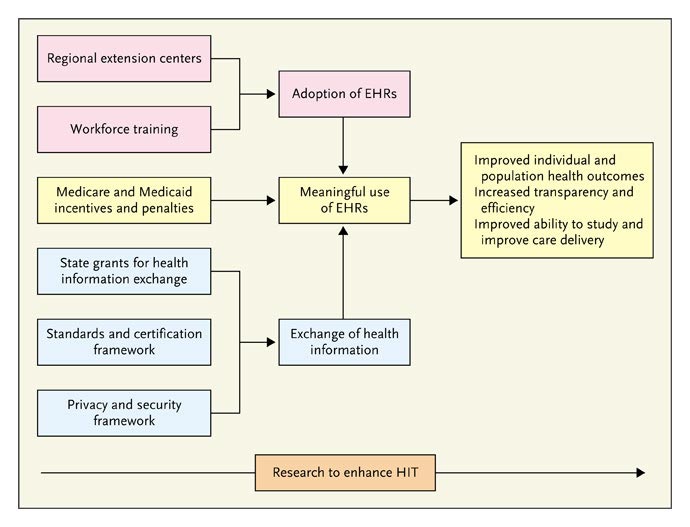The following guest post is provided by Dr. Nick van Terheyden, a contributing expert for HITECH Answers and Chief Medical Officer for M*Modal.
The games afoot or as they say in England “Game on”…..healthcare standards are published (actually the Notice of Proposed Rule Making NPRM) and supplemented by an article posted by David Blumenthal “Launching HITECH” posted by the New England Journal of Medicine.
As before there are multiple stages that include incentives linked to each of the stages but if we focus on Stage 1 that starts in 2011. This includes electronically capturing health information, clinical decision support for disease and medication management, clinical quality measures all tied with protection and securing of the information (don’t forget liability for security breaches are now much further reaching). The investment is made (numbers vary but range from $14 – 27 Billion). To receive incentives providers must use their electronic medical records to improve the overall quality of healthcare delivered by demonstrating achievement of a series of objectives. These include (this is not an exhaustive list but captures the main elements):
- Entering orders, medications etc in CPOE
- Maintaining problem lists in ICD9-CM or Snomed-CT coding
- Maintain active medication list and electronic prescribing
- Recording vital signs, smoking status
- Receive and display lab results encoded with LOINC codes
- Generate patient lists based on specific conditions and generate patient reminders
- Provide patients with electronic copy and electronic access to their record and discharge instructions
- Generate a clinical summary for each visit
- Exchange clinical data with other providers
- Protect the information, encrypt it and record disclosures
There are others but these are broad categories and groups and represent a major push to genuine electronic medical records that are digital, contain useful data and are shareable between systems. Certification (as currently provided by CCHIT based on their existing criteria and what we know to date about the requirements for meaningful use) has 11 EHR products certified for 2011. This is a work in progress and expect to see many more and probably other certification bodies.
The overall tenet of this initiative is summarized by Dr Blumenthal in his article:
“…so as to reward the meaningful use of qualified, certified EHRs — an innovative and powerful concept. By focusing on the effective use of EHRs with certain capabilities, the HITECH Act makes clear that the adoption of records is not a sufficient purpose: it is the use of EHRs to achieve health and efficiency goals that matters.”
There are other strands/programs that are designed to address the obstacles to adoption – summarized in this chart from the NEJM article:
Behind the scenes the health information exchanges that allow for the easy sharing of clinical data between systems, clinical users and patients will be essential.
This is a broad set of criteria and for many clinical practices a long way from where they are now. The shape of this program is clear – sign up and participate now and receive additional funding/payment or wait and be punished later if you do not implement. There remain many challenges not least of all the products and expertise required to roll these technologies out but to me the message is clear – this train is leaving and failing to get on board will cost you more in the future.
Dr. Nick van Terheyden is currently Chief Medical Officer for M*Modal. In addition to writing and lecturing on futuristic trends in healthcare technology, his advice and counsel is sought by hospitals, physicians and other allied healthcare professionals. He has also worked as a business leader in one of the first speech recognition Internet companies. Contact him at: nvt@mmodalcom

